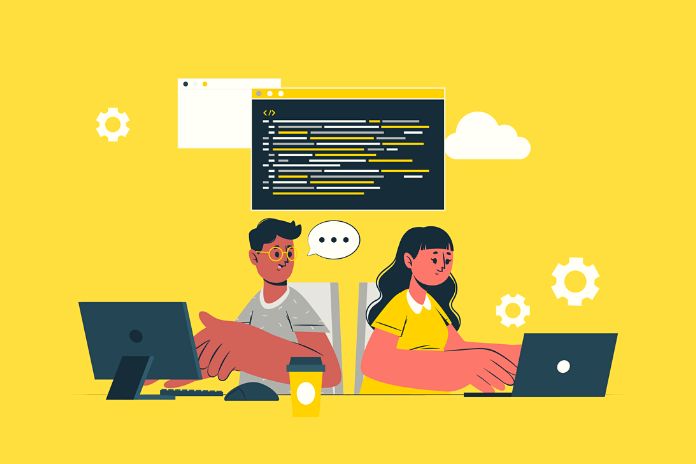Booming, no-code development promises programming without entering a line of code thanks to graphical tools that erase the complexity of programming languages. But what is the difference with low code?
What Is No Code?
The notion of no code refers to a software development mode that hides the complexity of the application’s source code . No-code development tools combine different techniques:
- Graphic templates and prepackaged widgets to assemble user interfaces,
- The possibility of dragging and dropping application components to create the application’s synoptic and combine the different stages of the processes: conversion tunnel, order tracking, etc.
- The automation workflow triggers actions based on events, such as generating alerts or countermeasures below a certain threshold of turnover or traffic on a website.
Guided in his work by a 100% graphical development environment in the logic of WYSIWYG ( What You See Is What You Get ), the user will be able to carry out tests and carry out several integrations until the application works as desired. . Presented differently, no code defines the ability to create software without having to enter a single line of code.
What Is The Difference Between No-Code And Low-Code?
Overall, the applications listed in this article are part of a logic intended to be code-free as much as possible. The concept of low-code (which literally means “little code”) consists of completing a no-code environment of possibilities to edit the application’s source code in parallel. Ultimately, the more accessible no-code development tools are to learn, the more limited they become.
Conversely, the more complex and low-code oriented they are, the richer they are. They leave the door open to so-called specific developments, going off the beaten path, even innovative, and requiring coding. Clear consequences will involve the intervention of programmers. Among the leading low-code development platforms are Appian, Mendix, Microsoft (with its Power Platform), OutSystems, Salesforce, and ServiceNow.
Why No Code?
No code has multiple interests. First, it allows business teams to create applications without resorting to developers. A practice that is realistic for the most straightforward no-code projects, for example, completing an online survey with Google Forms or automated processes with Zapier and IFTTT. Two tools that capitalize on an equivalent logic: triggering actions in response to events, for example, generating an alert following the update of software or web content.
Targeting VSEs and freelancers, the no-code platforms Strikingly, Weebly, and Wix allow them to create websites. They are limited to standardized functionalities, even if they go as far as creating online stores. It is impossible, for example, with this type of tool to create complex conversion tunnels involving third-party software integration coupled with specific management rules.
How Do You Code?
No-code development tools allow you to create applications without touching the underlying code. It will be necessary to have primary navigation, ergonomics, and graphics skills. The advantage of no code? It allows business experts to automate routines, for example, generating a response to a specific type of email or even integrating data from one software to another. It will also allow them to quickly create application models (or proofs of concept) to validate the development of a larger project. Given its limitations, no code will allow addressing 100%.
What No-Code Tools?
There are many, many no-code development tools out there.
- Form no code: Google Forms, Microsoft Forms…
- No-code productivity management: ClickUp, Monday, Notion…
- No code application development: Appy Pie, Builder.ai, ksar, Quixy…
- No-code database: Airtable, Smartsheet…
- No-code automation workflow: IFTTT, Microsoft Flow, Zapier…
- AI platform: Alteryx, C3.ai, Google Vertex, H2O.ai…
What Are Open Source No-Code Tools?
Faced with proprietary and paid no-code platforms and software, a whole series of no-code open-source development tools can be used free of charge. In the same way as proprietary offers, they allow you to create applications without having to get your hands on the software’s source code. The logic is equivalent. Open source no-code development solutions revolve around graphical environments allowing visual modeling of interfaces, navigation, integration of pre-configured functionalities, and assembly of associated processes.
What Are Low-Code Tools?
On the “low code application platform” (LCAP) market, there are notably Mendix, Microsoft (with its Power Platform), OutSystems, Salesforce, and ServiceNow. All five technologies rank in the leader square of Gartner’s latest magic quadrant in this area. For its part, the Forrester firm also places Mendix, Microsoft, OutSystems, and Salesforce among the leaders in the low-code development platform segment.
Read Also: What Is No-Code?

